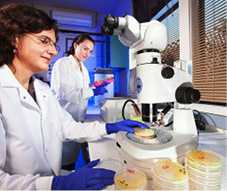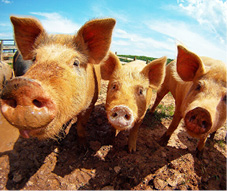The health of animals, people and the environment is connected. The "One Health" approach is the collaborative effort of the human health, veterinary health and environmental health communities. Through this collaboration, USDA achieves optimal health outcomes for both animals and people.
With its partners such as the U.S. Fish and Wildlife Service, U.S. Food and Drug Administration (FDA), the Centers for Disease Control and Prevention (CDC), the National Institutes of Health (NIH), the Environmental Protection Agency, tribal Nations, USDA seeks to maintain or reduce health risks to animals, humans, the environment and society.
USDA serves the nation through its commitment to producing wholesome and nutritious foods; ensuring the safety of plant and animal commodities entering the country; safeguarding the health and welfare food-producing animals; and preventing entry and/or controlling plant and animal pathogens. These cumulative actions ensure the health and safety of humans through these One Health partnerships.
Domestic and Global Challenges that
Require a One Health Approach

Antimicrobial Resistance
Antimicrobial resistance (AMR) has been an area of focus during the past two decades as USDA plays a dual role in protecting animal agriculture and public health. USDA recognizes AMR as a potential and serious threat and focuses on surveillance, research and development, and education, extension and outreach.

Influenza in Swine
While influenza viruses almost always remain infectious only within their host species, at times infections may spread to other species. The main influenza viruses circulating in U.S. pigs in recent years are H1N1, H1N2 and H3N2. Influenza viruses in pigs can occasionally infect people, and human influenza viruses can infect swine.
News and Resources
- USDA Announces $6 Million in Available Funding for Antimicrobial Resistance Research (News Release, May 2016)
- USDA "One Health" Approach (PDF, 116 KB)
- Animal and Plant Health Inspection Service (APHIS) One Health
Blogs
- USDA Launches a One Stop Shop for its "One Health" Approach to Zoonotic Threats (June 2016)
- A Banner Year for Leadership: 5 Ways We're Answering America's Agricultural and Environmental Challenges (December 2015)
- Stewardship, Antibiotics and Veterinary Medical Ethics A Call for Action (November 2015)
- USDA Embraces One Health Approach for Solving Problems Associated with Antimicrobial Resistance (November 2015)
- Alternatives to Antibiotics to Keep Food Animals Healthy (November 2015)
